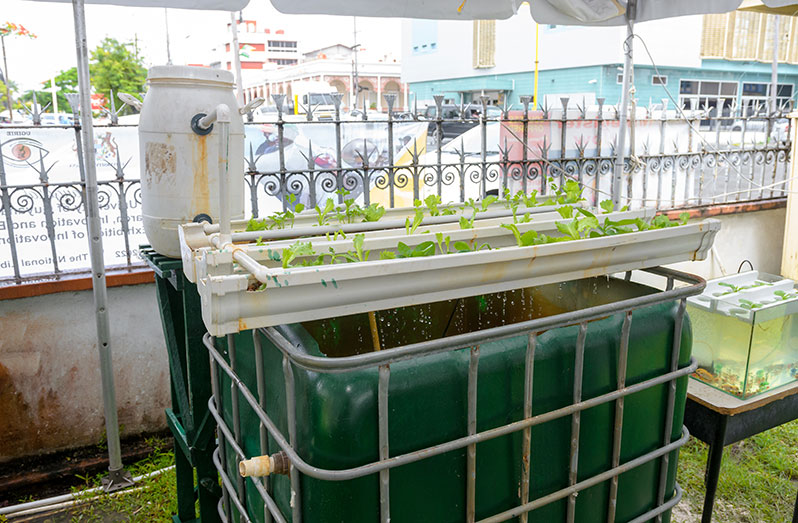–as two-day inaugural ‘Exhibition of Innovations’ opens
By Cassandra Khan
THE University of Guyana’s Institute of Research, Innovation, and Entrepreneurship (UGIRIE) opened a two-day Exhibition of Innovations on Wednesday at the National Library, Georgetown.
Professor Pat Francis, Director of UGIRIE, encouraged a spirit of entrepreneurship in her remarks at the opening ceremony. “You don’t have to have a business to be an entrepreneur, but you have to have a stake in a business,” Professor Francis related.
She said the institute is working on two platforms. The first, she noted, is to generate innovations, while the second encourages students and lecturers to think as entrepreneurs.
At the UGIRIE exhibition, more than 30 innovations were displayed by university students and lecturers.
Professor Francis plugged the need for increased partnership with the government, as upscaling projects requires capital investment.
She explained that the story she grew up hearing about composite bread has been brought to fruition.

“This composite bread is made from cassava flour and sweet potato flour, and we have worked very hard to bring the flour itself to fruition to make the bread,” Prof. Francis said.
“This innovation also reduces our reliance on the importation of wheat, because we have proved that we can incorporate a significant more-than-20-per-cent of sweet potato and cassava flour into our mix,” she explained.
Additionally, Dr. Randy Domer, speaking on behalf of the innovators, said that the competitive landscape relies heavily on innovation.
“Developing new and useful ideas is the only way to combat such challenges in all fields, especially those of technology, engineering, health, business, education, and agriculture,” Dr. Domer said.
He explained that the development of novel and useful inventions is imperative to overcome some of these challenges, since they bring new solutions to existing problems, which would allow for adaptability.
“For example, the recent COVID-19 pandemic disrupted lives on a monumental scale; routine operations were rendered obsolete over the course of a few months, and many operations still sustained negative results from this world shift because they stopped,” he said.
He related that as a researcher, the two major challenges that limit the quality of research are the lack of resources, and the lack of collaboration between relevant organisations in the private and public sectors.
“Better collaboration between the university and industry will work more relevant and applicable solutions to the problems we face. The collaboration I speak of involves both private and public sectors on an equal level,” Dr. Domer said.
Providence Forrester, a lecturer attached to the Faculty of Agriculture and Forestry, exhibited an aquaponics system showcasing a unit which contributes to healthy eating, as persons would have both plants as well as fish.
Coretta Samuels, showcasing the cultivation of mushrooms, explained to the Guyana Chronicle that in the Faculty of Agriculture and Forestry, extensive research was done on species of mushroom.
“In the process of the mushroom culture (taken from spores or tissue), we were able to source the culture from the University of Pennsylvania,” Samuels said.
She related that it is a long series of microbiological work that must be done in the laboratory, and under heavily sterilised conditions.
“After receiving the culture, what we do is to produce a base material that we pour into the petri plates, and then you will transfer a part of the culture onto the material into the petri plates, and you will allow it to grow,” Samuels said.
She explained that when this is fully grown onto the petri plates, another phase would begin where you would use an autoclave to sterilise bird seeds.
Samuels said that bird seed is used as an agro-grain material, because there were many successes in the past when using it.
“What we do, we take a piece of the culture and put it on to the bird seed, and here is where you would have this process where the ‘agro’ is colonised by the culture, and then it starts to grow,” she said.



.jpg)











